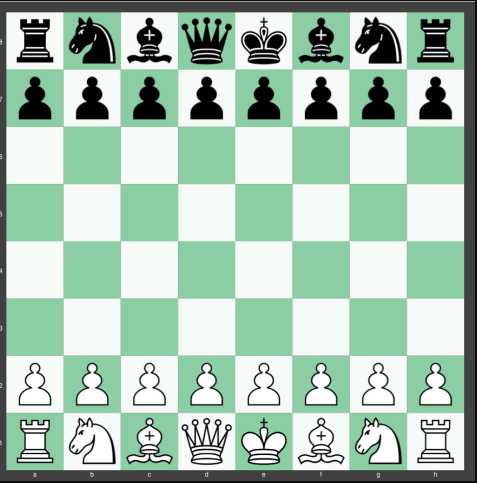Chess is a game of abstract strategy. It’s played on a square chessboard with 64 squares laid out in an eight-by-eight grid. In chess, the castle, also commonly referred to as the rook, is one of the most important pieces. It is involved in the strategic move called castling, which we will discuss in more detail in this article.

In Chess, What are Castles?
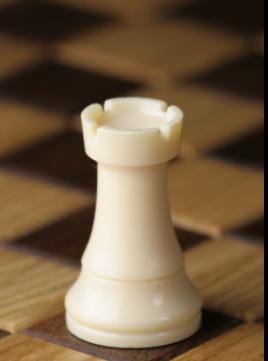
The rook is a chess piece that is compared to a little castle in appearance, and as a result, it is frequently referred to as a “castle”. However, the phrase “castle” is regarded as a casual or out of date way of referring to the rook. Previously, the piece was also known as the tower, marquess, rector, and comes (count or earl).
Each player begins with two rooks, one in each of the two corners on his side of the board. The castle, like other pieces, captures its opponents by occupying the square on which an opponent piece stands.
Also read about other pieces of chess
Castles and their Histories
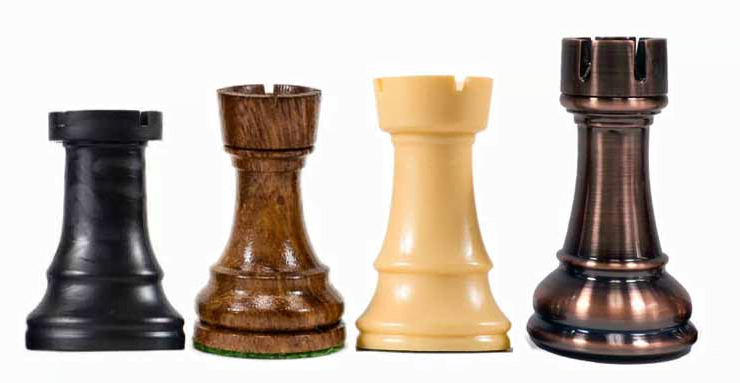
The rook originally represented a chariot. The name rook is derived from the Persian word rukh, which means chariot. During the Persian Gulf War Chariots were fully armoured and carried a driver as well as at least one ranged weapon bearer, such as an archer. Thus, the sides of the rook were designed to seem like defence stonework, creating the image of miniature, movable structures that instilled fear on the battlefield.
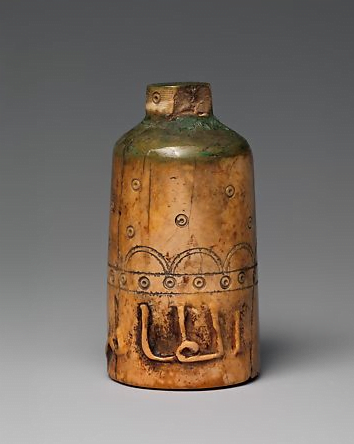
The rook is often shown as a turret in the West. One probable reason is that when the game was transferred to Italy, the Persian term rukh became mixed up with the Italian word Rocca, which means citadel, a fortified area in town.
On the other hand, the Russian word for rook (“ladya”) signifies ship or boat. This might be due to the usage of an Arabic-style V-shaped rook piece, which some may have misidentified as a ship.

The castle or tower first appeared in Europe in the 16th century, in Vida’s 1550 Ludus Scacchia, like a tower on the back of an elephant. The elephant eventually vanished, and just the tower remained as the centrepiece.
Some Other Names for Castles
| Language | Rook (Symbol and word) | Translation |
| Afrikaans | T Toring | tower |
| Arabic | ر رخ / طابية (rukhkh / ṭābiya) | fortress / castle |
| Bengali | N নৌকা (noukā) | boat |
| Chinese | R 車 (jū) | chariot |
| Czech | V věž | tower |
| Danish | T tårn | tower |
| Dutch | T toren / kasteel | tower / castle |
| French | T tour | tower |
| German[19] | T Turm | tower |
| Greek | Π πύργος (pýrgos) | tower |
| Japanese | R ルーク (rūku) | |
| Polish | W wieża | tower |
| Portuguese | T torre | tower |
| Swedish | T torn | tower |
| Welsh | C castell | castle |
| Mongolian | т тэрэг (tereg) | chariot |
| Marathi | H हत्ती (hātti) | elephant |
How do Castles Move?

After the queen, the castle is the most powerful piece. It can move forward, backward, and sideways, but not diagonally. Because rooks can never jump over other pieces, if an enemy soldier gets in their way, they must either stop or capture it.
Castling is a crucial goal in the early stages of a game. It has two functions. Firstly, it moves the king away from the centre of the board, and secondly, it puts the castle into a more active position in the centre of the board. It is even possible to checkmate by castling.
Also read How to play chess
What is Castling?
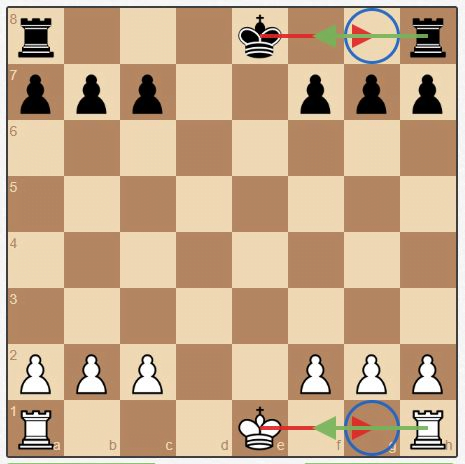
Castling is a special chess move that involves the king and either of the initial rooks of the same colour. It is the only move in chess that allows a player to move two pieces simultaneously.
History of Castling
The origins of casting may be traced back to the king’s jump. The jump had two variations: the king would move once like a knight, or the monarch would advance two squares on his initial move. The knight move might be employed early in the game to get the king to safety, or later in the game to get away from a threat. The second type was popular in Europe as early as the 13th century.
Similarly, in North Africa, the king was moved to a safe position using two moves. First, the king moved to the player’s second rank, and second, the rook, as well as the king, moved to each other’s original squares.
Another origin story of the move is set in the 15th and 16th centuries, when the chess rules boosted the strength of the queen and bishop, allowing these pieces to attack from a distance as well as from both sides of the board. Thus, several kinds of castling arose to ensure the king’s safety.
The rule of casting changed depending on the place and period. For example, in Lombardy, the white king may also hop to a2, b1, or h1, with the black king matching squares. The king’s move was accompanied by a pawn’s move in Germany and Italy.
In 1500, the castling that we know today was invented. Castling was defined in the Göttingen manuscript as per the game recorded by Luis Ramrez de Lucena in 1498 as moving the rook and then moving the king on successive movements.
How do you Castle?
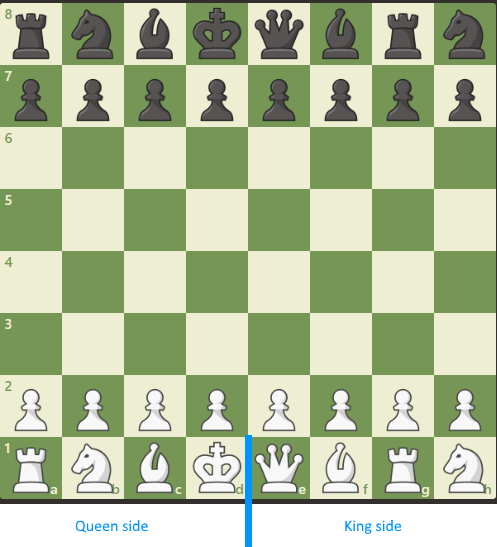
You can castle on either the kingside, also known as short castling or the queenside commonly known as long castling. However, the king and rook on the side you wish to castle must both be on their starting squares, and all spaces between them must be unoccupied.
To castle, move your king two squares closer to the rook. The rook is then jumped to the square on the other side of the king. It’s the only time in a chess game when a piece other than the knight may leap, and the only time when you can move two pieces at once. You must always move the king first, followed by the rook, or both at once. You should not move the rook first.
It is usual for both players to castle kingside, but it is uncommon for both players to castle queenside. Castling on opposing sides frequently results in a heated battle since both players’ pawns are free to move to attack the opposing king’s castled position without exposing the opposing king.
What are the Guidelines in Castling?
Conditions Required for Castling
Castling is only legal if all of the following requirements are met:
- The king has never moved before;
- The chosen rook has never moved before;
- There must be no pieces between the king and the rook of choice.
- The king is not presently under control.
- The king cannot cross through a tile that is being attacked by opposing pieces.
- Your king should not end up in check.
- The chosen rook and the king must be of the same rank. This rule was created to enable the promotion of a pawn to a rook.
You have to touch the king first
Castling is considered a king move under the tight touch-move regulations applied in most tournaments. A player who plans to castle but first touches the rook is committed to making a rook move and hence, cannot castle. The proper technique for the castle is to move the king first. After the two-square king move is finished, the player has formally decided to castle, and the rook must be moved accordingly. The touch-move rule does not apply to the rook if there is no valid king move.
If a player commits a banned castling, he or she must return the king and rook to their original positions before moving the king if there is another lawful king move, including castling, on the opposing side.
In the castling position, all squares must be accessible and unoccupied.
As mentioned previously, you must first ensure that all squares between the King and the Kingside or Queenside rook are unoccupied. You can not make this move if there’s a chess piece between you and the side of the chessboard where you want to castle.
You can’t castle twice in a row.
You may believe that you can castle twice since you have two rook pieces available. However, this is not true. You cannot castle the second time, even if you have returned your King to its original position in e1 and have not yet moved either the Kingside or Queenside rook.
You can not castle if you have already moved your rook
This implies that after you’ve moved your Kingside or Queenside rook to combat, you can’t use it to castle with the King again, even if you’ve returned it to its original position.
You cannot castle your King if you have already moved it.
Your King, like the rook, is no longer authorised to castle if it has been relocated to a different location on your chessboard. You can return it to its original position, but you can’t castle it with either of your rooks.
When your King is in check, you cannot castle him.
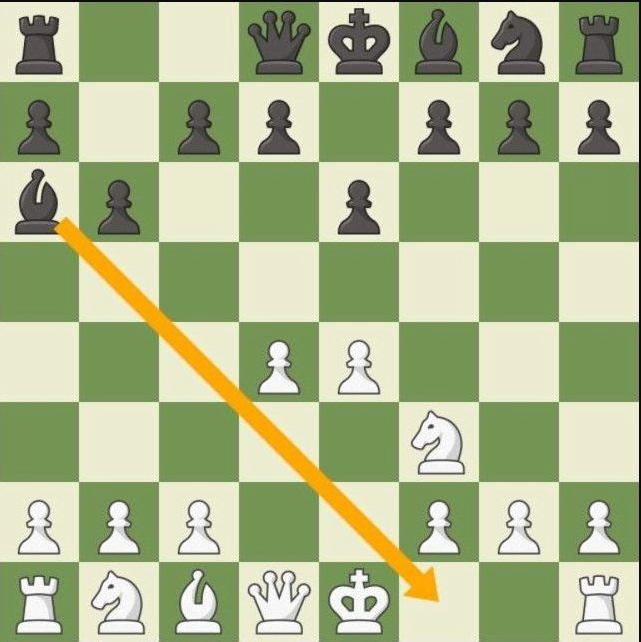
You will be unable to use a castling move to avoid your opponent’s check on your King. This implies that if your King is under check, you must move it away from the checking position, which would not be warranted if you castled it with either your Kingside or Queenside Rook. However, if you can protect your King with an attack or a block without moving the King, you can castle on the following move.
Is it always safer to have a castled king?
The answer is NO. This is because there are a few of the issues that might develop as a result of casting:
- It frequently sacrifices speed.
- The king can be marginalised.
- Discordant pieces can exist.
The second point may come as a surprise to many of us as we have been trained to guard the king at all costs. Failure to do so can easily result in checkmate. However, it is important to note that the king may potentially be a highly powerful piece. The king, unlike the knight or bishop, may guard pieces on all squares that surround it. It may be a potent attacker in endgame positions with fewer pieces. Many endgames cannot be won without the assistance of the king.
Therefore, consider the stage of the game you’re in, the pieces your king could help from its current location, the interruptions to your piece arrangement that casting can create later in the game, and if you’re casting right into a fierce attack before moving.
https://www.youtube.com/embed/Tk49MZpobac?feature=oembedRules for chess
Is it advisable to castle as early as possible?
Castling too soon might turn your king into a target.
Your opponent may be able to undermine the pawn structure surrounding your castled king at times. Therefore, it is advisable not to castle if you see that you cannot prevent your opponent from breaking down your king’s defence.
Wait to see where your opponent’s castles are located.
Your king is frequently safer if your castle on the same side as your opponent, regardless of colour. This keeps the opponent from starting a pawn storm. Castling on opposing sides of the board creates a dynamic game.
For example, if white castles early, black can employ this technique to assault the white king. Thus, by postponing castling, you may select whether the game will be more tactical or positional.
Many openers utilize the approach of castling on one side. In the Austrian Assault of the Pirc Defense, for example, white will castle queenside and attack with his kingside pieces. The attack can begin as soon as the white king reaches the queenside.
Notable Examples of Castling
Anatoly Karpov vs. Victor Korchnoi
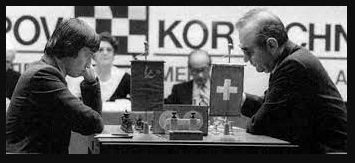
In his 1974 Candidate final match against Anatoly Karpov, Viktor Korchnoi reportedly asked the arbiter if castling was permitted while the castling rook was under assault. The arbiter agreed, Korchnoi made the move, and Karpov resigned shortly afterwards.
Wolfgang Heidenfeld vs. Nick Kerins
There were three castlings in the game between Wolfgang Heidenfeld and Nick Kerins in Dublin in 1973. Of course, the third one (White player’s second) was unlawful.
Yuri Averbakh vs. Cecil Purdy
Black moves the castled queenside rook over the attacked b8-square.
O’Kelly vs. Feuer
Otto Feuer captured Albéric O’Kelly in the Thornton castling trap during the 1934 Belgian Championship. O’Kelly secured the b2-pawn in the diagram position with 10…Rxb2 and resigned after dxe5 dxe5., Qxd8+ Kxd8 and 0-0-0+. Feuer’s final move both checked and attacked the rook on b2.
FAQs related to Castling
Is castling a decent chess move?
Yes, in the correct conditions. Fortunately, those instances occur frequently, so in general, it is a favourable decision.
However, make certain that you do not move the three pawns in front of the king. When you do this, you create a weakness for opposing pawns to latch on to and rip your defences open. Do everything it takes to keep the opponent pawn from attacking you before you move your pawns. In addition, pay attention to the diagonals. Attempt to avoid mating threats on the diagonals by not moving your pieces.
Another pointer is to not castle if the centre is not opening. If your castle with a tight centre and your opponent does not, he or she can occasionally do some damage with the h-pawn and the rook behind it. Thus, you can wait if the centre is sealed up and your opponent hasn’t castled yet.
Can you castle your way out of Checkmate?
No, you can’t castle your way out of checkmate. If you are checkmated, you have already lost the game and cannot castle. The game of chess is over when your king is checkmate.
A Modern Guide to Checkmating Patterns – Download
What are the drawbacks of casting in chess?
The two major downsides are that it costs you a move unless it’s part of a plan, and it leaves the King open to a devastating pin unless a suitable piece has advanced.
Therefore, it may be favourable to avoid castling in certain situations, which are as follows:
- If casting puts your king in more jeopardy.
- If your opponent’s most dangerous pieces have already departed the board (particularly the queen).
- In the situation where your rook is assisting a critical flank pawn advance.
- If you have powerful strategies at your disposal right now and casting will cost you the initiative
Can you castle when Rook is being attacked?
Yes, you just need to be concerned about the monarch. Additionally, when casting, the rook can cross through an attacking square, whereas the king cannot.
Where did the word castling come from?
The word castling comes from the castle, the chess piece used to perform the move. Castling is known in most European languages other than English as torchiere or Rocha da or roque or some other derivative of the same Persian root from which the English word ‘rook’ is derived, while the local adjectives long and short is used to refer to ‘queenside/kingside castling’ in those countries.
What is the benefit of castling kingside in chess?
- In kingside casting, the king is in a more secure position.
Because the king is put closer to the edge of the board in kingside castling, it is safe. Furthermore, all of the pawns are strong enough to protect the king.
- Kingside casting takes less time.
After you’ve developed your bishop and knight, you’ll be able to conduct kingside casting with ease. While queenside castling takes longer since you must first build the knight, bishop, and queen.
However, despite these advantages, there is one thing to keep in mind before castling kingside- the rook is in a less active position. Because the h1 rook is positioned on f1 in kingside castling, it does not dominate the centre of the game. As a result, the rook is assigned to a less active position.
What are the pros of castling queenside?
Because white gets to move first, white is usually the one to castle queenside. Thus, white can exploit the initiative to develop more quickly and launch an attack.
In addition, queenside casting aids the king in launching into action more quickly in the finale. Castling on the queenside moves the king closer to the centre of the board. This allows you to seize control of the endgame and assault your opponent more quickly.
Another benefit is that it aids in the early activation of the rook. The a1 rook is placed on d1 in queenside castling, thus, assisting in activating your rook and putting it into play as soon as possible.
Can the king and rook capture the opponent when castling?

No, the king, as well as the rook, are not allowed to capture when castling.
Share with your friends
